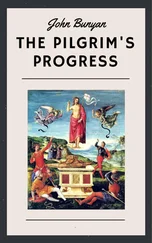John Bartlett - The Progress of Ethnology
Здесь есть возможность читать онлайн «John Bartlett - The Progress of Ethnology» — ознакомительный отрывок электронной книги совершенно бесплатно, а после прочтения отрывка купить полную версию. В некоторых случаях можно слушать аудио, скачать через торрент в формате fb2 и присутствует краткое содержание. ISBN: , Жанр: foreign_antique, foreign_prose, Историческая проза, на английском языке. Описание произведения, (предисловие) а так же отзывы посетителей доступны на портале библиотеки ЛибКат.
- Название:The Progress of Ethnology
- Автор:
- Жанр:
- Год:неизвестен
- ISBN:http://www.gutenberg.org/ebooks/35234
- Рейтинг книги:3 / 5. Голосов: 1
-
Избранное:Добавить в избранное
- Отзывы:
-
Ваша оценка:
- 60
- 1
- 2
- 3
- 4
- 5
The Progress of Ethnology: краткое содержание, описание и аннотация
Предлагаем к чтению аннотацию, описание, краткое содержание или предисловие (зависит от того, что написал сам автор книги «The Progress of Ethnology»). Если вы не нашли необходимую информацию о книге — напишите в комментариях, мы постараемся отыскать её.
The Progress of Ethnology — читать онлайн ознакомительный отрывок
Ниже представлен текст книги, разбитый по страницам. Система сохранения места последней прочитанной страницы, позволяет с удобством читать онлайн бесплатно книгу «The Progress of Ethnology», без необходимости каждый раз заново искать на чём Вы остановились. Поставьте закладку, и сможете в любой момент перейти на страницу, на которой закончили чтение.
Интервал:
Закладка:
In connexion with this subject it may be added, that M. Berthelot, a learned traveller, states that there exists a striking affinity between the names of places and of men in the ancient language of the Canaries and certain Carib words. 9 9 Histoire Naturelle des Canaries. Tom. I. p. 23
The contiguity of the Canaries to the African continent is such, that we can readily suppose their ancient inhabitants to have had communication with it, whereby the Libyan language became known to them. A new field of enquiry is thus opened to philologists, and we may here seek for the means to unravel one of the most difficult questions connected with the origin of the American race, and the means by which they reached this continent, for we never have been among those who believed that America derived the mass of her population, her men and animals, from Asia, by the way of Behring's Straits.
The author of a late work on California, New Mexico, &c., brings to our notice a tribe of Indians known as the Munchies (Mawkeys) or white Indians. 10 10 Scenes in the Rocky Mountains, Oregon, California, &c., by a New Englander. p. 198.
"This remarkable nation occupies a valley among the Sierra de los Mimbros chain of mountains, upon one of the affluents of the river Gila, in the extreme northwestern part of the province of Sonora. They number about eight hundred persons. Their country is surrounded by lofty mountains at nearly every point, is well watered and very fertile. Their dwellings are excavated in the hill-sides, and frequently cut in the solid rock. They subsist by agriculture, and raise great numbers of horses, cattle and sheep. Among them are many of the arts and comforts of civilized life. They spin and weave, and make butter and cheese, with many of the luxuries known to more enlightened nations. Their government is after the patriarchal order, and is purely republican in its character. In morals they are represented as honest and virtuous. In religion they differ but little from other Indians. Their features correspond with those of Europeans, with a fair complexion and a form equally if not more graceful. In regard to their origin, they have lost all knowledge or even tradition; neither do their characters, manners, customs, arts or government savor of modern Europe."
Another tribe of Indians called the Navijos, of whom we know but little, except that they have long had a place on the maps, is noticed by the same author. They occupy the country between the Del Norte and the Sierra Anahuac, in the province of Sonora, and have never succumbed to Spanish domination. "They possess a civilization of their own. Most of them live in houses built of stone, and cultivate the ground – raising vegetables and grain for a subsistence. They also raise large numbers of horses, cattle and sheep – make butter and cheese, and spin and weave."
The blankets manufactured by these Indians are superior in beauty of color, texture and durability to the fabrics of their Spanish neighbors. Their government is in strict accordance with the welfare of the whole community. Dishonesty is held in check by suitable regulations, industry is encouraged by general consent, and hospitality by common practice. As warriors they are brave and daring, making frequent and bold excursions into the Spanish settlements, driving off herds of cattle, horses and sheep, and spreading terror and dismay on every side. As diplomatists, in imitation of their neighbors, they make and break treaties whenever interest and inclination prompts them. 11 11 Scenes in the Rocky Mountains, California, &c. by a New Englander. p. 180.
The Navijo country is shut in by high mountains, inaccessible from without, except by limited passes through narrow defiles, well situated for defence on the approach of an invading foe. Availing themselves of these natural advantages, they have continued to maintain their ground against fearful odds, nor have they suffered the Spaniards to set foot within their territory as conquerors.
The relations above given of the Mawkeys and Navijos (pronounced Navihoes , and sometimes so written), correspond with the accounts that from time to time have been brought to us, by hunters and trappers who have occasionally visited them. A few years since there appeared in the newspapers an account of both these tribes, by a trapper. He stated that the Mawkeys had "light, flaxen hair, blue eyes and skins of the most delicate whiteness." 12 12 Auburn (New York) Banner, 1837.
I have two other accounts wherein both are described much as before stated. Their manufactures are particularly dwelt upon. Some of them wore shoes, stockings and other garments of their own make. Their stone houses are noticed as well as their large herds of cattle, – also their cultivation of fruits and vegetables. They raise cotton, which they manufacture into cloth, as well as wool. Fire arms are unknown to them. "Their dress is different from that of other Indians, and from their Spanish neighbors. Their shirts, coats and waistcoats are made of wool, and their small clothes and gaiters of deer skin."
These accounts might be considered fanciful, had we not high authority which fully corroborates them. Humboldt says, "The Indians between the rivers Gila and Colorado, form a contrast with the wandering and distrustful Indians of the savannas to the east of New Mexico. Father Garces visited the country of the Moqui, and was astonished to find there an Indian town with two great squares, houses of several stories, and streets well laid out, and parallel to one another. The construction of the edifices of the Moqui is the same with that of the Casas grandes on the banks of the Gila." 13 13 Political Essay on New Spain. Vol. 2, p. 315. (London ed. in 4 vols. 8vo.)
In Mr. Farnham's late work on California, is a notice of the Navijos from Dr. Lyman's report. The author begins by saying, that "they are the most civilized of all the wild Indians of North America." 14 14 Life and Travels in California. p. 372.
Their extensive cultivation of maize and all kinds of vegetables – their rearing of "large droves of magnificent horses, equal to the finest horses of the United States in appearance and value," and their large flocks of sheep are also noticed. From the fleece of the sheep which is long and coarse resembling mohair, "they manufacture blankets of a texture so firm and heavy as to be perfectly impervious to water." They make a variety of colors with which they dye their cloths, besides weaving them in stripes and figures. They are constantly at war with the Mexicans, but stand in fear of the American trappers, with whom they have had some severe skirmishes, which resulted much to their disadvantage. 15 15 Dr. Lyman states, that "in the autumn of 1841, an American trader with thirty-five men, went from Bents fort to the Navijo country, built a breastwork with his bales of goods, and informed the astonished Indians, that he had 'come into their country to trade or fight, which ever they preferred.' The campaigns of the old trappers were too fresh in their memory to allow hesitation. They chose to trade, and soon commenced a brisk business."
It is believed by Baron Humboldt and by others, that in the Navijos and Mawkeys we see the descendants of the same race of Indians which Cortez and the Spanish conquerors found in Mexico, in a semi-civilized state. We are unable to state whether any affinity exists between their language and the other Mexican dialects, as no vocabularies have been collected. The whiteness of their skins, their knowledge of the useful arts and agriculture, and the mechanical skill exhibited in their edifices at the present day, bear a striking analogy with the Mexican people at the period of the conquest, and as M. Humboldt observes, "appears to announce traces of the cultivation of the ancient Mexicans." The Indians have a tradition that 20 leagues north from the Moqui, near the mouth of the Rio Zaguananas, the banks of the Nabajoa were the first abode of the Aztecs after their departure from Atzlan. "On considering the civilization," adds Baron Humboldt, "which exists on several points of the northwest coast of America, in the Moqui and on the banks of the Gila, we are tempted to believe (and I venture to repeat it here) that at the period of the migration of the Toltecs, the Acolhues and the Aztecs, several tribes separated from the great mass of the people to establish themselves in these northern regions." 16 16 Humboldt's Political Essay on New Spain. Vol. 2, p. 316. On the testimony of the missionaries of the Collegio de Queretaro , versed in the Aztec language, M. Humboldt states, that the language spoken by the Moqui Indians is essentially different from the Mexican language. In the seventeenth century, missionaries were established among the Moquis and Navijos, who were massacred in the great revolt of the Indians in 1680.
Интервал:
Закладка:
Похожие книги на «The Progress of Ethnology»
Представляем Вашему вниманию похожие книги на «The Progress of Ethnology» списком для выбора. Мы отобрали схожую по названию и смыслу литературу в надежде предоставить читателям больше вариантов отыскать новые, интересные, ещё непрочитанные произведения.
Обсуждение, отзывы о книге «The Progress of Ethnology» и просто собственные мнения читателей. Оставьте ваши комментарии, напишите, что Вы думаете о произведении, его смысле или главных героях. Укажите что конкретно понравилось, а что нет, и почему Вы так считаете.












